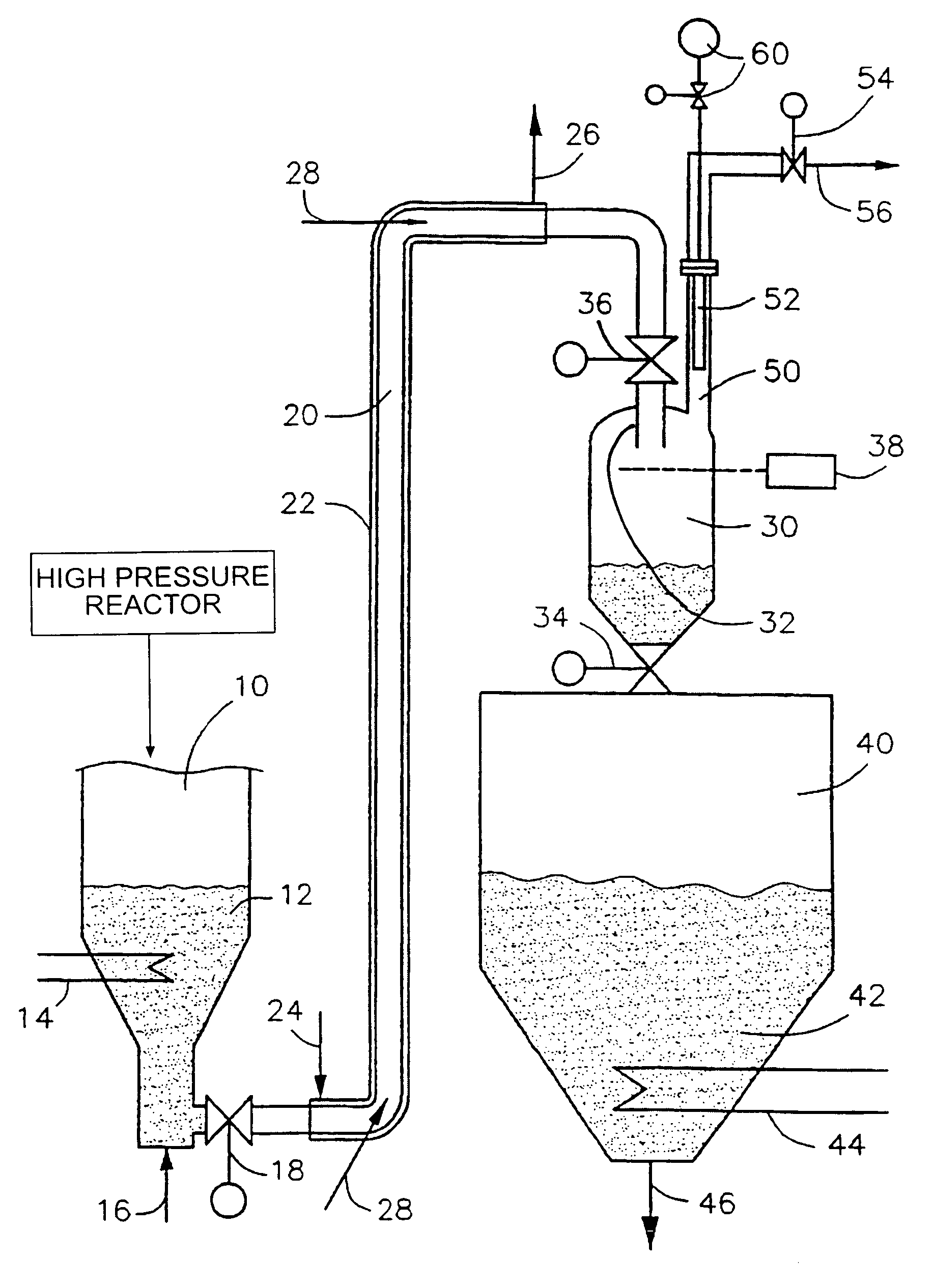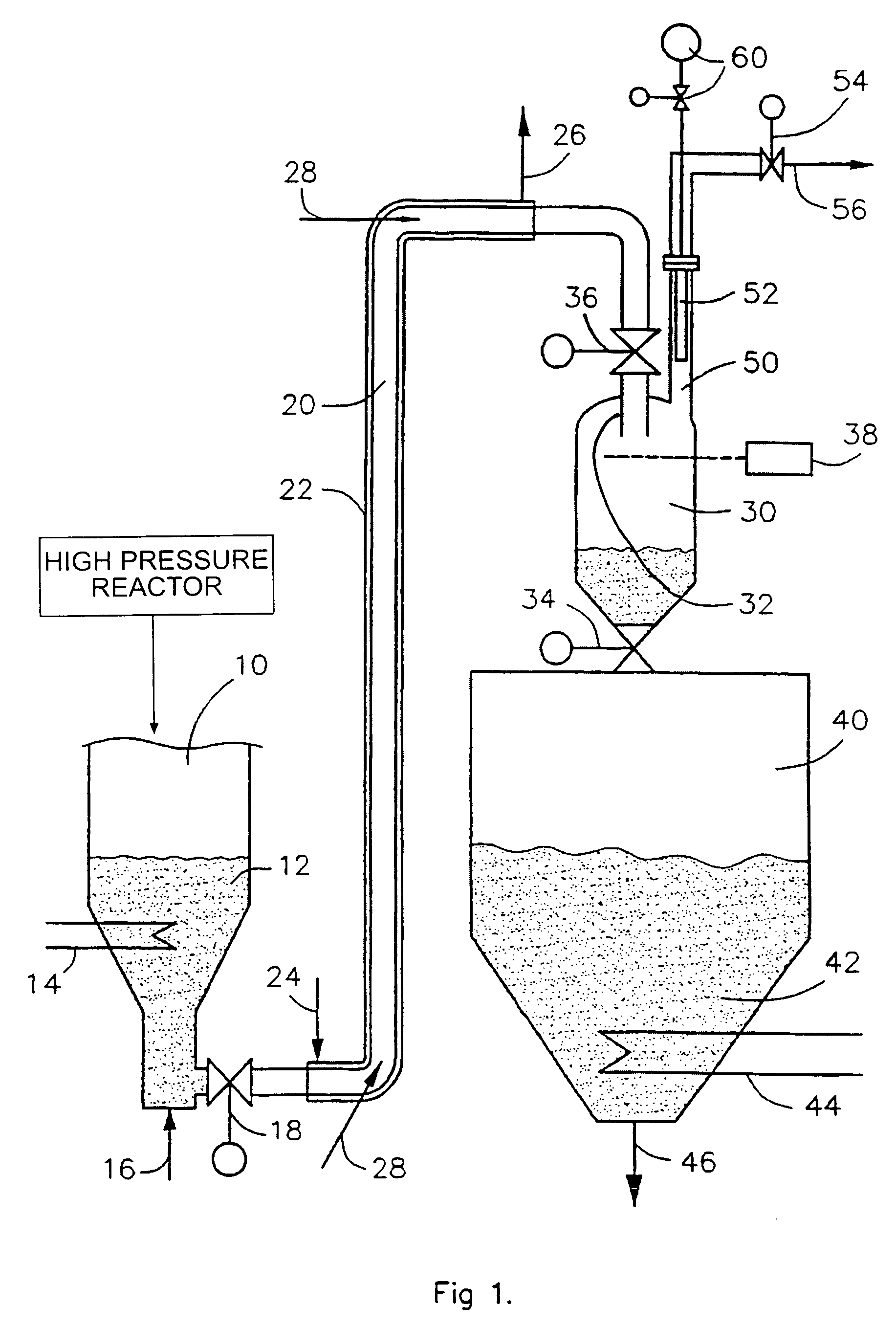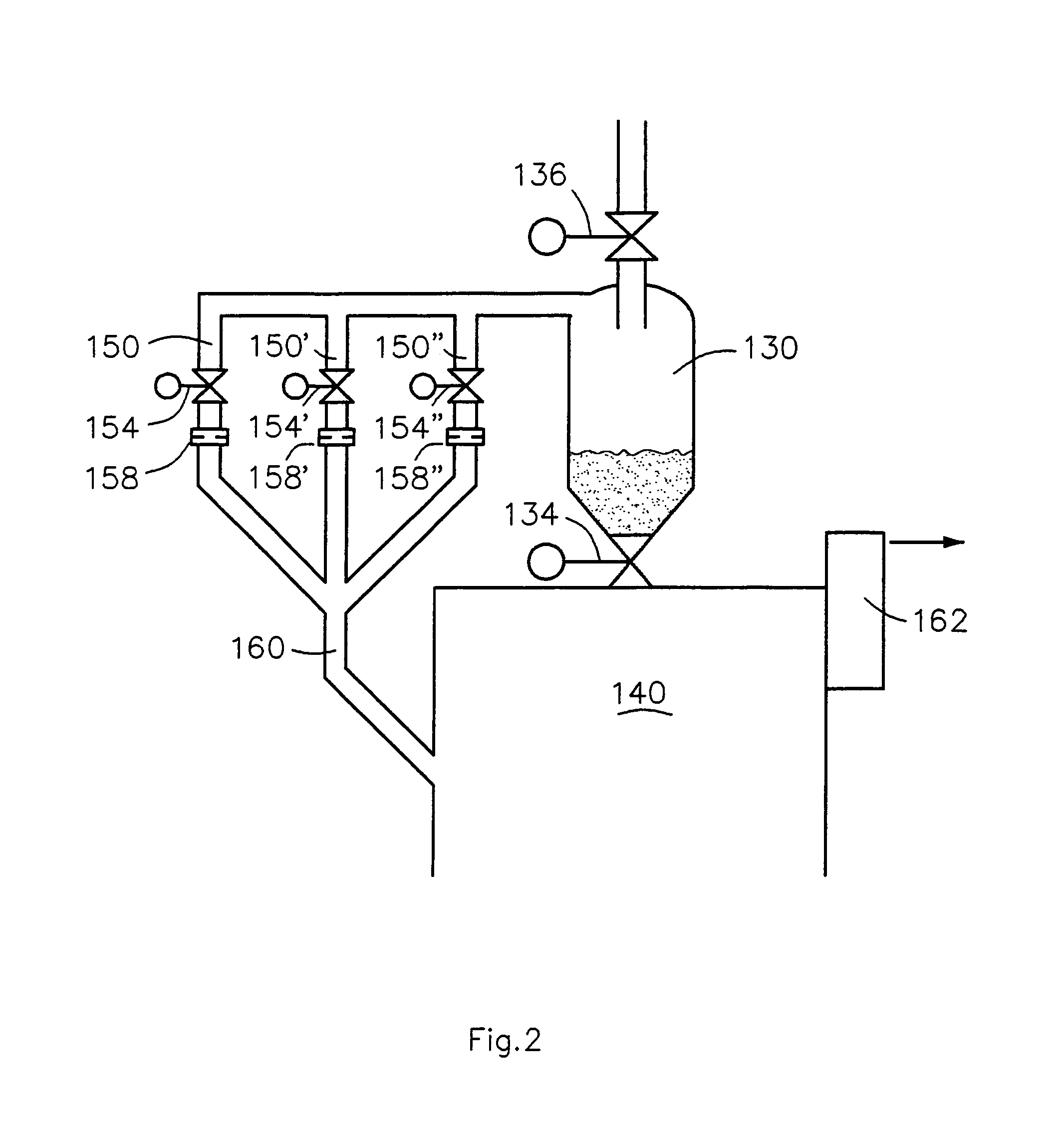Method and apparatus for treating high pressure particulate material
- Summary
- Abstract
- Description
- Claims
- Application Information
AI Technical Summary
Benefits of technology
Problems solved by technology
Method used
Image
Examples
Embodiment Construction
[0047]FIG. 1 illustrates an ash conveying system according to a first preferred embodiment of the present invention, in which a supply vessel 10, an ash conveyor line 20 and a receiving vessel 40 can be similar to those even in other preferred embodiments. The various embodiments differ from each other mainly in how the carrier gas discharge from a collecting vessel 30 and the pressure reduction of the collected material are arranged.
[0048]The invention is characterized in that particulate material containing reaction products of a reactor is conveyed pneumatically from a supply vessel 10 at a pressure of at least 2 bar, typically at 6–20 bar, to a receiving vessel 40, e.g., at atmospheric pressure, using the gas exiting the reactor as a carrier gas. When applying the invention, the volume of the supply vessel is typically larger than the volume of the conveyor line and it can be assumed that the pressure of the supply vessel 10 is constant.
[0049]The supply vessel 10 can consist, e....
PUM
 Login to View More
Login to View More Abstract
Description
Claims
Application Information
 Login to View More
Login to View More - R&D
- Intellectual Property
- Life Sciences
- Materials
- Tech Scout
- Unparalleled Data Quality
- Higher Quality Content
- 60% Fewer Hallucinations
Browse by: Latest US Patents, China's latest patents, Technical Efficacy Thesaurus, Application Domain, Technology Topic, Popular Technical Reports.
© 2025 PatSnap. All rights reserved.Legal|Privacy policy|Modern Slavery Act Transparency Statement|Sitemap|About US| Contact US: help@patsnap.com



